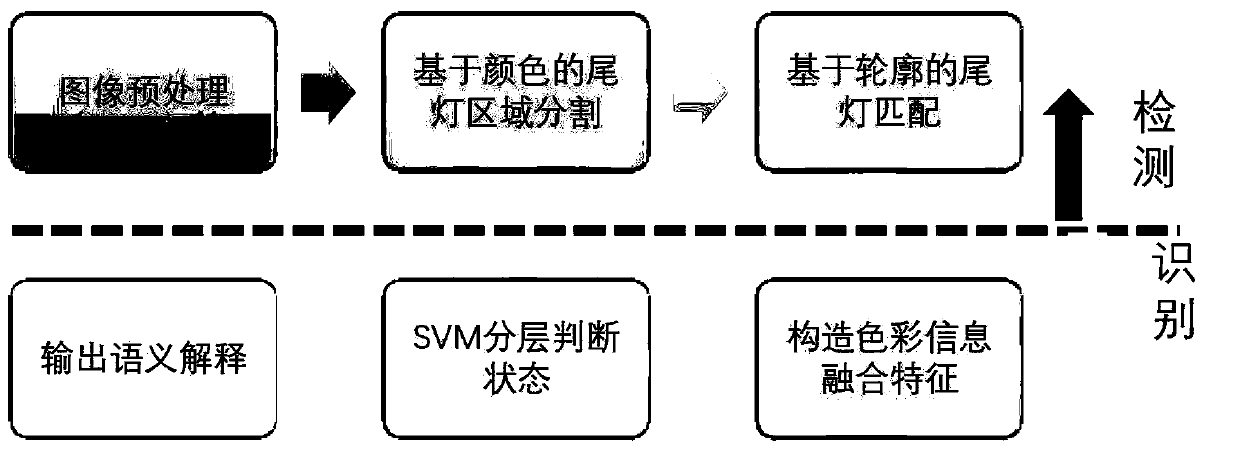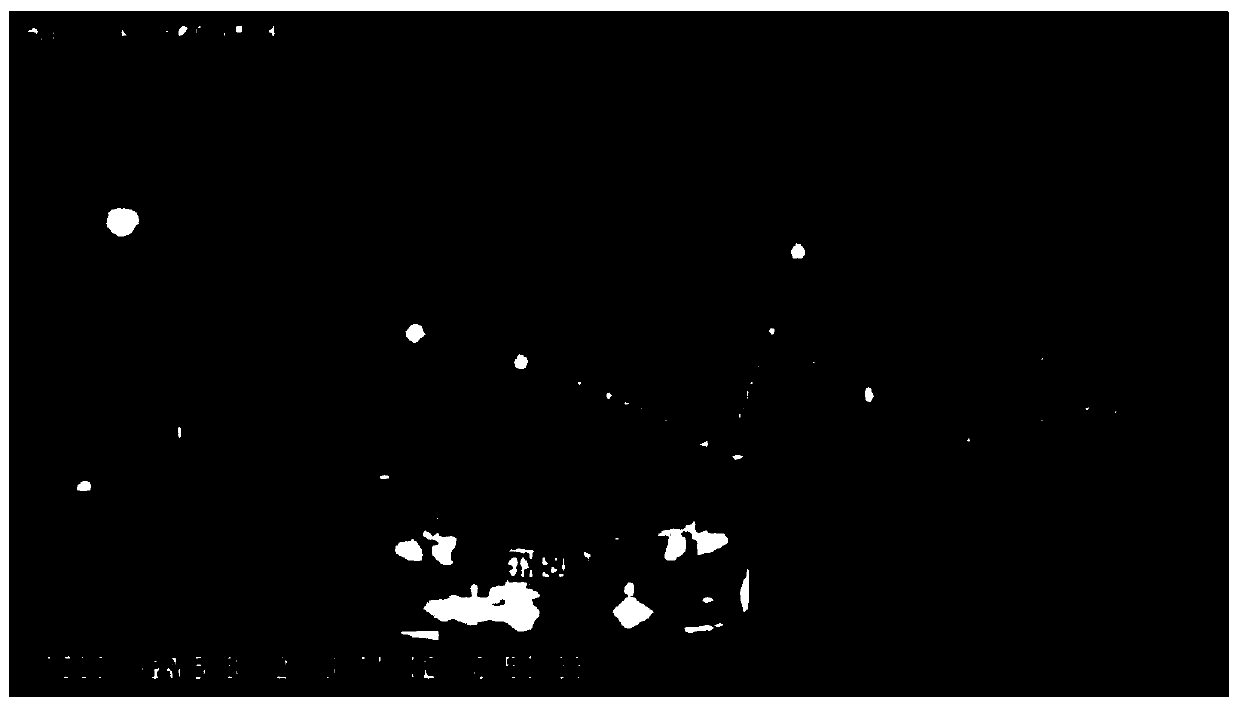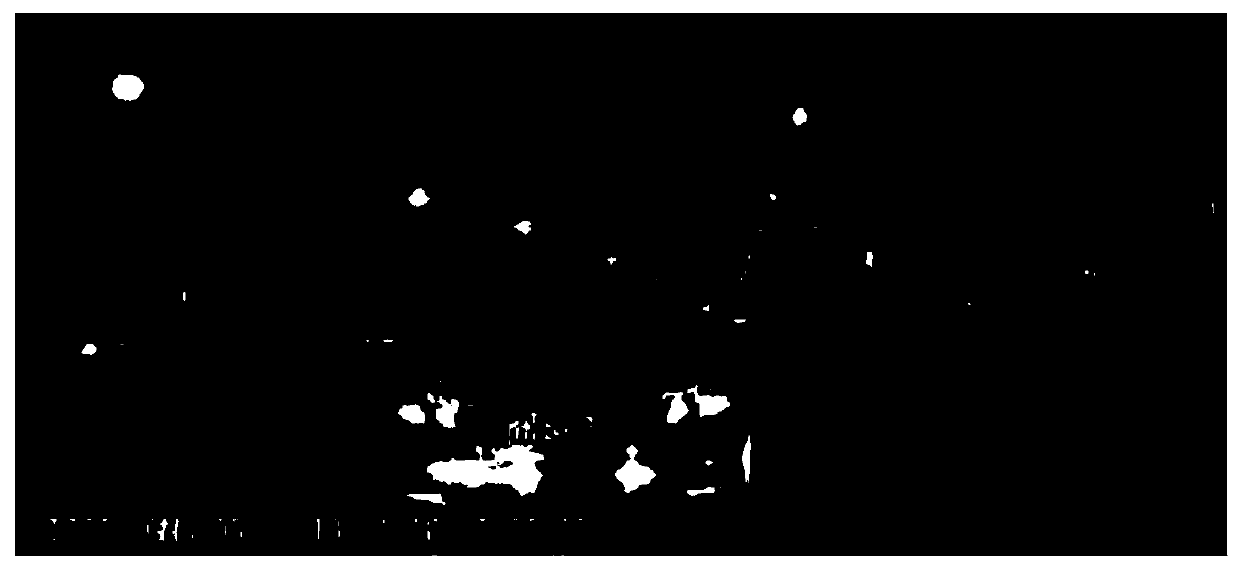Image-based Taillight Detection and Recognition Method
An identification method and taillight technology, applied in the field of image processing, can solve the problem of low detection accuracy of taillights, and achieve the effects of reducing judgment dependence and training complexity, efficient and accurate classification, and accurate detection and segmentation.
- Summary
- Abstract
- Description
- Claims
- Application Information
AI Technical Summary
Problems solved by technology
Method used
Image
Examples
Embodiment Construction
[0043] The specific embodiments of the present invention will be described in detail below with reference to the accompanying drawings.
[0044] An image-based taillight detection and recognition method, such as figure 1 The method flow chart includes the following steps:
[0045] Step S1: Perform image preprocessing on the input image, and use the gradient sharpening method to enhance the contrast of the original image. The gradient sharpening uses the Laplacian sharpening method, and the Laplacian kernel used is:
[0046]
[0047] And cut the original image, and take the lower 4 / 5 part of the original image as the actual detection area of the tail light; Figure 2a To input the original image, Figure 2b It is the image to be detected after sharpening and cutting.
[0048] Step S2: Obtain the taillight area based on color feature segmentation, and adopt a multi-color space information feature interaction method. The specific steps are as follows:
[0049] Step S21). The color image ...
PUM
 Login to View More
Login to View More Abstract
Description
Claims
Application Information
 Login to View More
Login to View More - R&D
- Intellectual Property
- Life Sciences
- Materials
- Tech Scout
- Unparalleled Data Quality
- Higher Quality Content
- 60% Fewer Hallucinations
Browse by: Latest US Patents, China's latest patents, Technical Efficacy Thesaurus, Application Domain, Technology Topic, Popular Technical Reports.
© 2025 PatSnap. All rights reserved.Legal|Privacy policy|Modern Slavery Act Transparency Statement|Sitemap|About US| Contact US: help@patsnap.com



